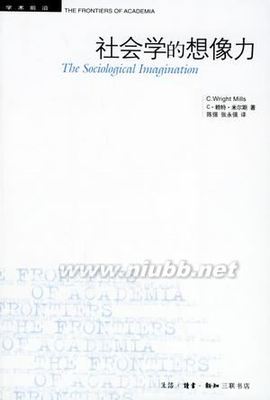The Nature of the Firm(1937)
R. H. COASE
Economic theory has suffered in the past from a failure to stateclearly its assumption. Economists in building up a theory haveoften omitted to examine the foundations on which it was erected.This examination is, however, essential not only to prevent themisunderstanding and needles controversy which arise from a lack ofknowledge of the assumptions on which a theory is based, but alsobecause of the extreme importance for economics of good judgment inchoosing between rival sets of assumptions. For instance, it issuggested that the use of the word “firm” in economics may bedifferent from the use of the term by the “plain man.”' Since thereis apparently a trend in economic theory towards starting analysiswith the individual firm and not with the industry,2 it is ail themore
necessary not only that a clear definition of the word "firm"should be given but that its difference from a firm in the "realworld," if it aists, should be made clear. Mrs. Robinson has saidthat "the two questions to be asked of a set of assumptions ineconomics are: Are they tractable? and: Do they correspond with thereal world?"3 Though, as Mrs. Robinson points out, "More often oneset will be manageable and the other realistic," yet theremay well be branches of theory where assumptionsmay be both manageable and realistic. It is hoped to show in thefollowing paper that a definition of a firm may be obtained whichis not only realistic in that it corresponds to what is meant by afirm in the real world, but is tractable by two of the mostpowerful instruments of economic analysis developed by Marshall,the idea of the margin and that of substitution, together givingthe idea of substitution at the margin.4 Our definition must, ofcourse, "relate to formal relations which are capable of beingconceived exactly."5
I
It is convenient if, in searching for a definition of a firm, wefirst consider the economic system as it is normally treated by theeconomist. Let us consider the des cription of the economic systemgiven by Sir Arthur Salter6. “The normal economic system worksitself. For its current operation it is under no central control,it needs no central survey. Over the whole rangeof human activity and human need, supply is adjusted to demand, andproduction to consumption, by a process that is automatic, elasticand responsive.” An economist thinks of the economic system asbeing co-ordinated by the price mechanism and society becomes notan organization but an organism.7 The economic system “worksitself. This does not mean that there is no planning byindividuals. These exercise foresight and choose betweenalternatives. This is necessarily so if there is to be order in thesystem But this theory assumes that the direction of resources isdependent directly on the price .The Nature of the Firm (1937) R.H. COASE
2
mechanism. Indeed, it is often considered to be an objection toeconomic planning that it merely tries to do what is already doneby the price mechanism.8 Sir Arthur Salter's des cription, however,gives a very incomplete picture of our economic system. Withina
firm, the des cription does not fit at all. For instance, ineconomic theory we find that the allocation of factors ofproduction between different uses is determined by the pricemechanism. The price of factor A becomes higher in X than in Y. Asa result, A moves from Y to X until the difference between theprices in X and Y, except if 50 far as it compensates for otherdifferential advantages, disappears. Yet in the real world, we findthat there are many areas where this does not apply. If a workmanmoves from department Y to department X, he does not go because ofa change in relative prices, but because he is ordered to do 50.Those who object to economic planning on the grounds that theproblem is solved by price movements can be answered by pointingout that there is planning within our economic system which isquite different from the individual planning mentioned above andwhich is akin to what is normally called economic planning. Theexample given above is typical of a large sphere in our modemeconomic system. 0f course, this fact has not been ignored byeconomists. Marshall introduces organization as a fourth factor ofproduction; J.B. Clark gives the co-ordinating function to theentrepreneur; Professor Knight introduces managers who co-ordinate.As D. H. Robertson points out, we find "islands of conscious powerin this ocean of unconscious co-operation like lumps of buttercoagulating in a pail of buttermilk.”9 But in view of the fact thatit is usually argued that co-ordination will be done by the pricemechanism, why is such organization necessary? Why are there these"islands of conscious power"? Outside the firm, price movementsdirect production, which is coordinated through a series ofexchange transactions on the market. Within a firm, these
markets transactions are eliminated and in place of the complicatedmarket structure with exchange transactions is substituted theentrepreneurco-ordinator, who directs production.10 It is clearthat these are alternative methods of co-ordinating production.Yet, having
regard to the fact that if production is regulated by pricemovements, production could be carried on without any organizationat all, well might we ask, why is there any organization? 0fcourse, the degree to which the price mechanism is supersededvaries greatly. In a
department store, the allocation of the different sections to thevarious locations in the building may be done by the controllingauthority or it may be the result of competitive price bidding forspace. In the Lancashire cotton industry, a weaver can rent powerand shop-room and can obtain looms and yarn on credit.11 Thisco-ordination of the various factors of production is, however,normally carried out without the intervention of the pricemechanism. As is evident, the amount of “vertical” integration,involving as it does the supersession of the price mechanism,varies greatly The Nature of the Firm (1937) R.H. COASE
3
from industry to industry and from firm to firm. It can, I think,be assumed that the distinguishing mark of the firm is thesupersession of the
price mechanism. It is, of course, as Professor Robbins points out,“related to an outside network of relative prices and costs,” 12but it is important to discover the exact nature of thisrelationship. This distinction between the allocation of resourcesin a firm and the allocation in the economic system has been veryvividly described by Mr. Maurice Dobb when discussing Adam Smith'sconception of the capitalist: “It began to be seen that there wassomething more important than the relations inside each factory orunit captained by an undertaker; there were the relations of theundertaker with the rest of the economic world outside hisimmediate sphere... the undertaker busies himself with the divisionof labour inside each firm and he plans and organises consciously,”but “he is related to the much larger economic specialisation, ofwhich he himself is merely one specialised unit. Here, he plays hispart as a single ceIl in a larger organism, mainly unconscious ofthe wider r?le he fills.”
科斯《企业的性质》英文版 企业的性质读后感
更多阅读

书评:论米尔斯《社会学的想像力》
《社会学的想像力》堪称米尔斯一生学术精华的大成之作;它以批判美国社会学界的成果作为全书的探讨主题,运用知识社会学的观点,并结合作者在社会阶层等方面的研究经验,批判传统学科的抽象与僵化界限,由此强调“社会学想像力”的重大意义

读奥尔多·利奥波德《沙乡年鉴》ASandCountyAlman 沙乡年鉴读后感
沙乡年鉴(A Sand County Alman)【美】奥尔多·利奥波德 著侯文慧译长春:吉林人民出版社 1997年序苏珊·福莱德 利奥波德在《沙乡年鉴》中对人和土地的生态及伦理(“大地伦理”:土地是一个由相互依赖的各个部分组成的共同体——人只

科斯《企业的性质》英文版 企业的性质读后感
The Nature of the Firm(1937)R. H. COASEEconomic theory has suffered in the past from a failure to stateclearly its assumption. Economists in building up a theory haveoften omitted to examine the foundations on whic

我看到了四季,不只是冬天——读刘亮程作品《寒风吹彻》有感 寒风吹彻读后感
我看到了四季,不只是冬天——读刘亮程作品《寒风吹彻》有感惠州一中高二(9)班 何曼菲生活在南方温婉的小城中,我还没有真正的看过雪,对寒冷,也只有模糊的文字上的印象。落
转载 &如魔鬼的爱——加西亚马尔克斯《蓝宝石般的眼睛》读后 加西亚马尔克斯名言
好原文地址:&如魔鬼的爱——加西亚马尔克斯《蓝宝石般的眼睛》读后作者:朱雀第一次读未免有些迷糊,不知道这篇四五千字的小说要讲述些什么,虽然作者的语言并不晦涩。当豁然找到解读这个故事的密码时,重新再读一遍,仿佛身浸冰海,只觉得
 爱华网
爱华网